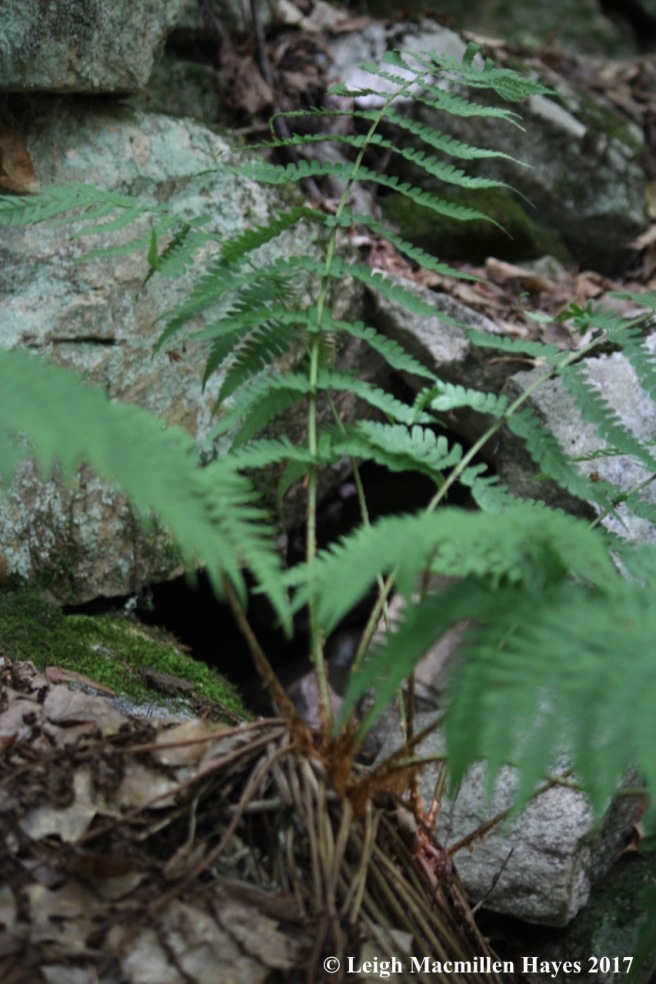Step along the path with the Greater Lovell Land Trust docents and you’ll soon discover that we don’t have all the answers, but we enjoy considering the questions.

For starters, we love the otherworldly structure of beaked hazelnuts but why do they have such long beaks? Is it to keep animals at bay? The fuzziness isn’t enough? And why do some beaks form where no nut is present? Plus, how do the animals know when they are ripe? We asked the latter as a couple of us stood in the Flat Hill parking lot this morning at the end of Heald Pond Road.

The resident hazelnut is loaded and we’ve a feeling it won’t be long before they are harvested because as we looked under the leaves for other fruits, we discovered several splitting open. Perhaps that answers the question about how the animals know–do they smell the nuts that are exposed?

Then there’s the Indian pipe that’s been fertilized. So, typically, the flower hangs down until fertilization. Who fertilizes it? I’ve heard moths and flies. But last year I saw a bee visit several. I’ve never seen either of the former, though they may be nocturnal. And then, how do the flowers make that transition from drooping to upright? Of course, it’s not just the Indian pipes that do that.

Indian cucumber root is another example. Just a month ago, its dainty flowers drooped below and now the fruits have formed above the second layer of leaves. Soon, as the fruits mature and turn purplish blue, so will the inner ends of the leaves–why is that? Is it a shout out to birds that the fruits are located there?

And then there was the marginal wood fern growing on top of a rock, its stipe or stalk below the blade covered with brown scales and fronds blue-green in color, which is often a give-away clue that it’s a wood fern. How does it survive on this rock where there isn’t much soil?

We know how it got its name–for the round sori located on the margins of the underside of the pinnules or leaflets. Based on their grayish-blue color, they hadn’t yet matured. But why are some sori such as these covered with that smooth kidney-shaped indusium? What aren’t all sori on all ferns so covered? And why aren’t there more wood ferns in these woods?

At last we arrived at our biggest mystery of all–a stone structure on the back side of Amos Mountain. Last summer, after we visited this site with Dr. Rob Sanford, a University of Southern Maine professor and author of Reading Rural Landscapes, we came away with so many questions about this structure located on a mountainside so far from any foundations.

Who built it? What was it used for? Was there a hearth? Did it have a roof? Was it fully enclosed? Was there a front wall?

Large boulders were used in situ and smaller rocks fit together. One part of the “room” is curved. For what purpose?

Immediately after that walk with Dr. Sanford, two of our docents decided to dig in and do some research at the Fryeburg Registry of Deeds and Lovell Historical Society. They are currently in the process of doing just that and maybe the mystery will be solved soon.
As curious as I am about the answers, I think I’ll be a wee bit sad if they are able to tell the story. Stepping into mysteries keeps us all on our toes–forever asking questions and seeking answers. Stay tuned on this one.

That is the best Indian Pipes photo ever!
LikeLiked by 1 person
Thanks Moira. Backside of Amos. They’re almost as difficult to photograph as the green stain fungi.
LikeLike